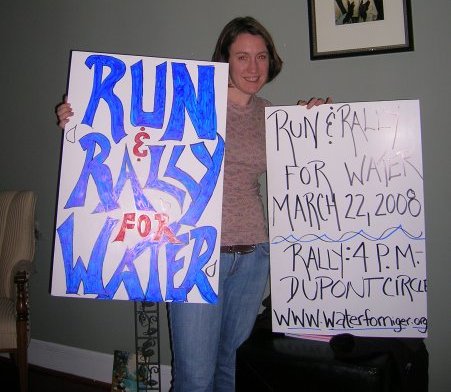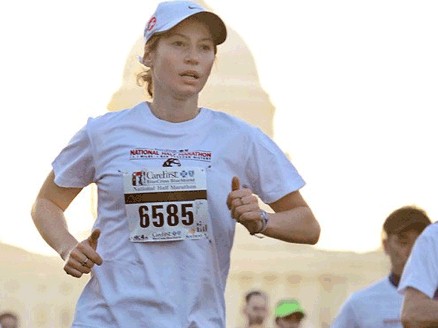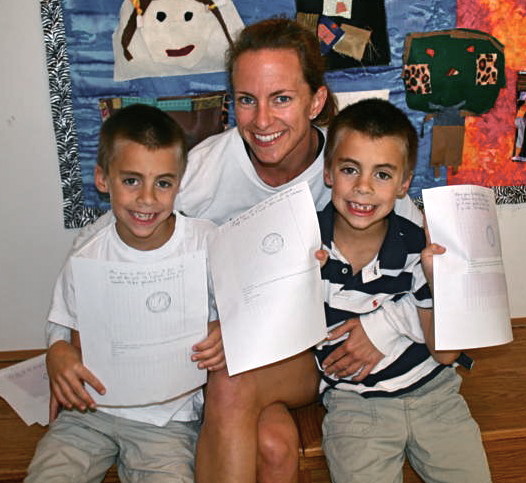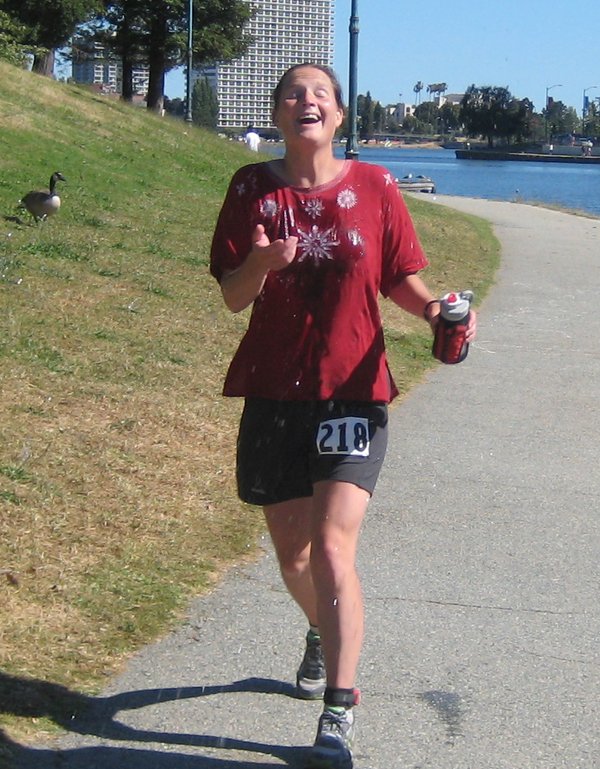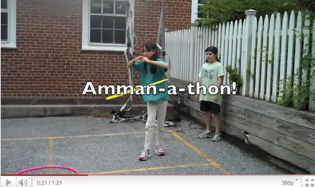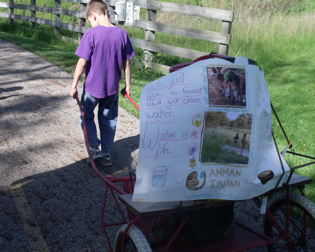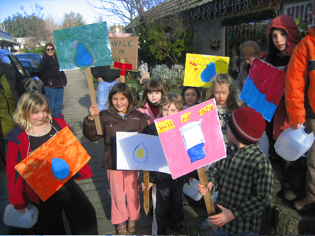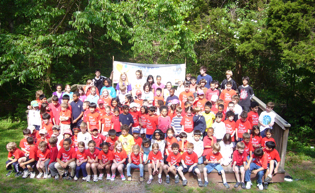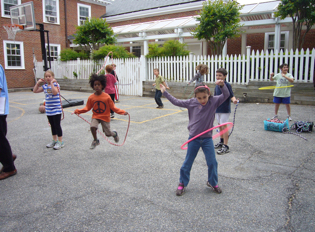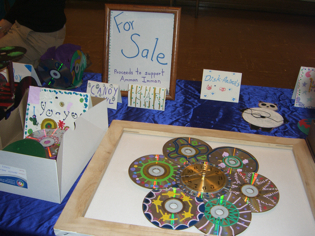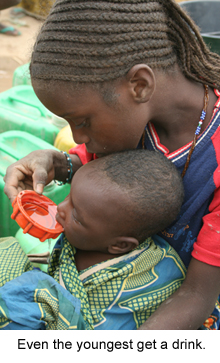 |
| Zoe is interning for Amman Imman this fall. |
Zoe Genova has been interning at Amman Imman’s Bethesda office since September. Currently a junior majoring in Anthroplogy at George Washington University in Washington, DC, Zoe is conducting an independent research project on the practical implications of anthropology. Zoe interviewed Ariane Kirtley, who majored in Medical Anthropology as an undergradudate at Yale University, to explore how anthropology is used in a nonprofit organization as a tool for international development. Zoe will integrate Ariane’s responses into her paper:
Zoe: How did your undergraduate degree in anthropology influence your future choices as a Fulbright scholar during your research in Africa?
Ariane: Actually, I went into anthropology because I grew up in Africa and was interested in studying how people of different cultures relate to health, medicine, etc. I then went on to study public health with the explicit desire to use my background in anthropology to help design more appropriate health initiatives in the developing world. My work with CARE international while I was an intern demonstrated how important it is to develop a culturally appropriate health care initiative in order to be successful. I wanted to elaborate on my work that I began with CARE, and this is why I applied for a Fulbright scholarship. So everything, from my interest in health and anthropology, to my love for Africa and specifically Niger, led to my Fulbright research.
 |
| Ariane |
Zoe: Do you feel that your anthropological background gave you an advantage in learning the ways of the people of the Azawak in order to help them? If yes, how so?
Ariane: Certainly, it taught me to listen to what they expressed as their needs, versus trying to determine these as an outsider looking in. If I began a water project, it’s because they asked for it, not because I decided that this is what they needed. It also helped me understand their approach to health (which was my primary interest), and helped me approach them with my own understanding of health and sickness.
For instance, I met a lady that was so sick, I was certain that if she didn’t quickly receive intense treatment, she was going to pass away. She hadn’t eaten for days, and couldn’t swallow any liquid. She had intense fevers and severe diarrhea. But her family refused my offer to drive her to a health center. Instead, they said she was afflicted by genies, and that the only cure I could give her was to dance and sing for her to ward the genies away. As distressing as the situation was, I put on my anthropology cap, and danced and sang for her. I also gave her a pretty intense treatment of oral rehydration therapy (just a sip every five minutes for several days). I was also able to get her fever down. She accepted my help because I demonstrated that I honored her beliefs. Low and behold, a few days later, she was eating and drinking fairly normally, and then eventually was back to full health. Who knows what was really afflicting her, but with mutual care and understanding, we were able to save her!
Today, we are saving many lives thanks to the fact that we listened to what they needed and wanted the most. I decided to bring them water even though I was discouraged and basically told it was impossible. Had I not been an anthropologist, I might have said, “Well, it’s too difficult to bring you water, so let me do something else instead”. That would have been a lot easier for me. Or I could have just ignored their requests for help altogether. But as an anthropologist, I was particularly eager to listen to them and learn from them!
Zoe: In creating your own non-profit organization in the international development sector, what have been your greatest challenges? (In terms of starting up, allocating resources, getting the word out, fundraising, etc.)
Ariane: It’s all a challenge. There isn’t a single part of what we do that isn’t a challenge. From raising money, to running the organization administratively, to constructing the infrastructure, to making sure that the populations manage the infrastructure and maintain our work sustainably. But perhaps the most challenging is the last component. And it all comes down to the sociology or anthropology. The people of the Azawak asked for water. And yet the only way I could bring it to them was in a way that they had never seen before, and had no prior understanding of how to manage and take care of. So, the boreholes aren’t really an anthropologically appropriate answer. They don’t have anything to do with the culture of the people we are helping. So it is up to us to work with the populations so that they can learn how to use the infrastructure and adapt. And if we work with them… and it may take years, they will learn, change and adapt. But this will only happen over the long run, and we will constantly work with them to find solutions on how to better manage their infrastructure and make it last for generations to come.
Zoe: How did you go about researching the best methods for borehole drilling and making them environmentally sustainable?
Ariane: I contacted experts in the field of hydrogeology around the world, and mostly people that had done this type of work in the developing world. We also contacted solar experts, as well as water management experts. I did a lot of online research as well. And we continue to do research and explore new and better possibilities.
Zoe: Which aspects of the creation of Amman Imman do you feel you have succeeded the most or which aspects have been the most rewarding?
Ariane: It’s all rewarding (well, except for the administrative part!). The two most rewarding things are 1) working with students in the USA, and seeing how inspired and motivated they are. It’s amazing connecting with such passionate and compassionate young individuals, and 2) drilling and seeing the water come out for the first time, and witnessing people rejoice over water they never dreamed of having… and knowing that lives will be saved thanks to this water.
Zoe: Meeting and understanding the wants, needs, and abilities of residents of the village/town/country of interest and gaining their cooperation is essential for successful international development. How did you find trustworthy, committed community members who were willing to join the committees for the boreholes? How do you decide how many people are needed and what their exact jobs will be?
Ariane: I don’t decide these aspects. First, we work with the Department of Hydraulics that has already established rules and regulations about how such matters are handled. Based on these rules, the villagers/communities themselves vote on the people that will be assigned to the management committee. They also determine the number of people that they want and feel they need on the committee. We advise them, but don’t determine anything. The villagers also vote on the roles that each committee member will have. So, you see, everything is mostly in their hands. We simply guide them and help them, and work with them to improve and find alternate/better solutions when necessary. And the Department of Hydraulics sets the rules.
Zoe: Women play a very important role in the success of sustaining and maintaining the boreholes and village water distribution. Why do you think this is and is it difficult to encourage equal power distribution amongst the men and women of the committee?
Ariane: Women are known to manage material things and money better than men. This makes sense. Women are in charge of households and children. They are in charge of the well-being of everyone. Men, on the other hand, are known to waste money and material things more readily. They tend to spend money on their own needs/wants, rather than make sure that the resources are funneled back to the family. Well, at least this is what research shows, and it has definitely demonstrated to be the case in the Azawak.
Yes, it’s difficult to have equal distribution of power. The Azawak is predominantly Muslim, and now patriarchal (although this didn’t used to be the case). You’ll find that younger men are the most difficult to work with, and to encourage working with women. Since they’ve lost their animals and other resources in a dramatic way over the past 10 years, young men have had to migrate to bordering and highly Islamic countries, such as Libya, Algeria, and Nigeria. They’ve brought back with them increased fundamentalist Islamic beliefs, such as cloistering women, and keeping women powerless. This is in direct conflict with the traditional Tuareg matriarchal society. And so, older men tend to be more attuned to the traditional relationship between men and women, and hence more respectful and understanding of the need for women’s participation. Also, women of different castes have more or less power. For instance, women of the traditional Tuareg slave caste tend to be given more power by their men, than women of the noble cast (at least today). Anyway, we’ve worked very hard so that the women maintain an important role within the management committee. In one village, women are much more powerful than in the other village. But they already were before we built the borehole, so this isn’t surprising. We’ll keep working on this aspect, in a culturally appropriate and respectful manner.
Zoe: Unfortunately, many countries in Africa are politically unstable and corrupt. How do the politics of Niger affect the work that Amman Imman is able to do? Must you get governmental permissions before beginning work?
Ariane: Yes, we have to get permission, and we also have to work with government ministries. The last government was difficult to work with. The new government has been very helpful, and has facilitated our work in many ways. They don’t want to do the work themselves, but they will help us when they can.
Zoe: Did you learn the traditional languages of the Tuaregs and the Woodabe Fulani or did you speak to them in French? Do language barriers pose problems in development?
Ariane: I only speak a little Tamachek, and no Fulani. Denis speaks more Tamachek than I do. We have a translator, although there is one person in Tangarwashane that speaks some English (thanks to his travels to Nigeria), and there are a few people in Kijigari that speak French. Also, often the Fulani speak some broken English thanks to their many travels to Nigeria, so sometimes I can communicate a little with them directly.
Certainly, not speaking the language is a barrier. There are many nuances that are lost. Also, we have to rely that our translator is translating correctly. At one point our translator was not translating what we were asking him to translate, and this posed a lot of trouble. Also, you are more respected if you speak the language, and it helps develop a holistic relationship with a community. But we get over this quite well, and we’re doing our best to learn the language as much as we can.
Zoe: Learning from past experiences and obstacles, will you change fundraising methods at home or implementation methods abroad in the future?
Ariane: Of course, we are constantly changing our approach, or improving upon our success. This is what makes an organization evolve. We are constantly looking to improve how we operate, and given our curiosity and desire to improve, we are only limited by our human and financial resources.
Zoe: Thank you for this interview!
Ariane: You are most welcome!









